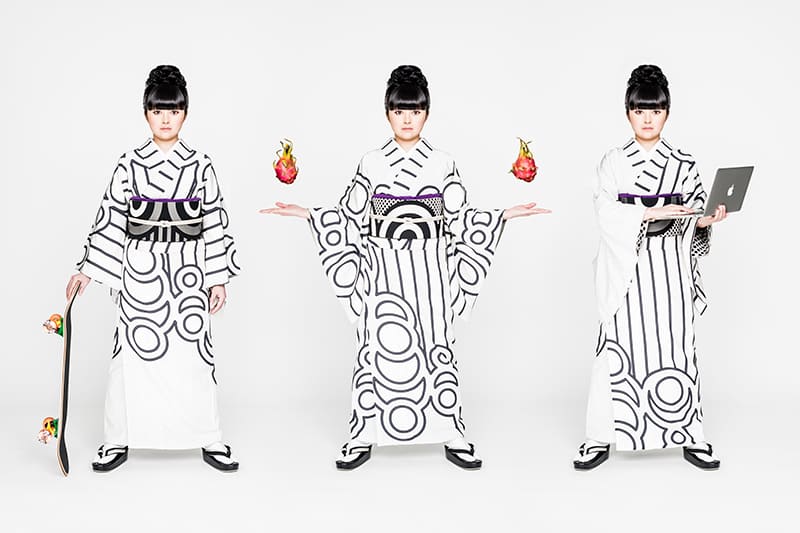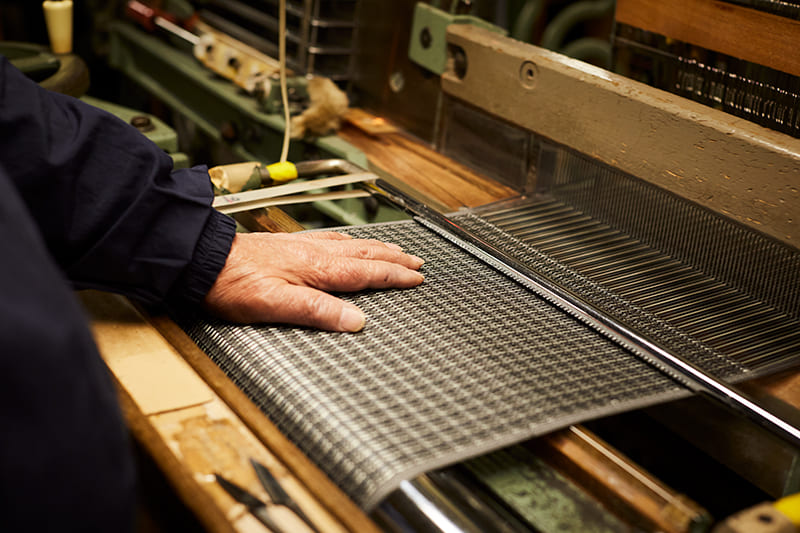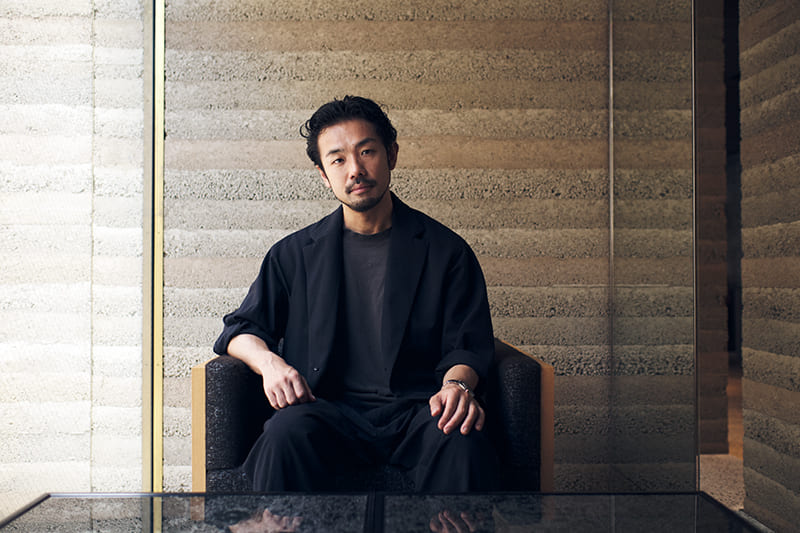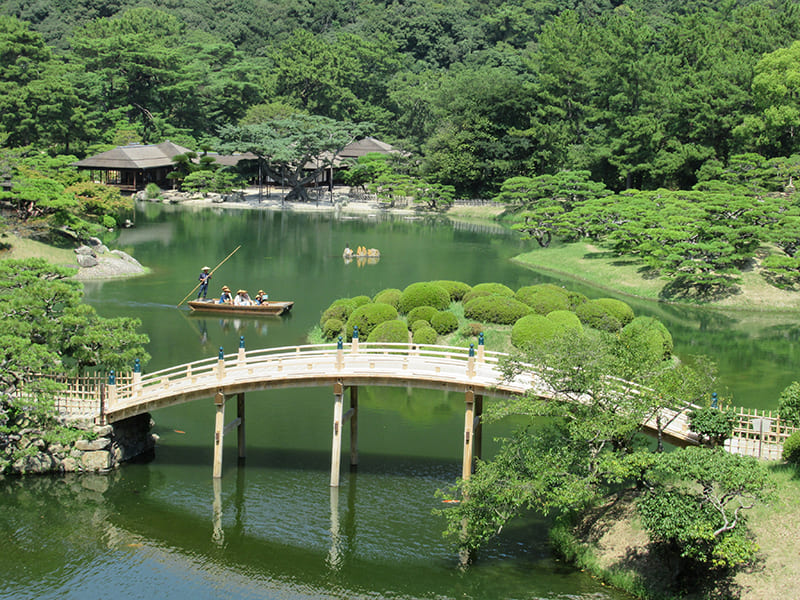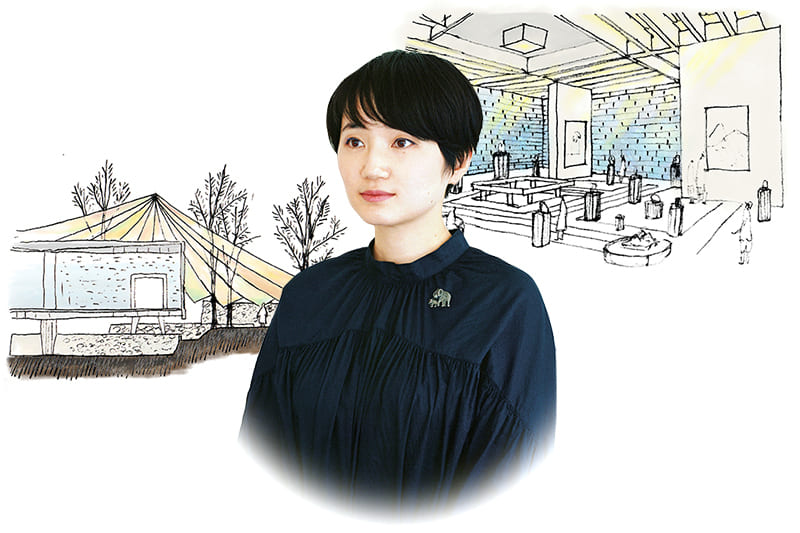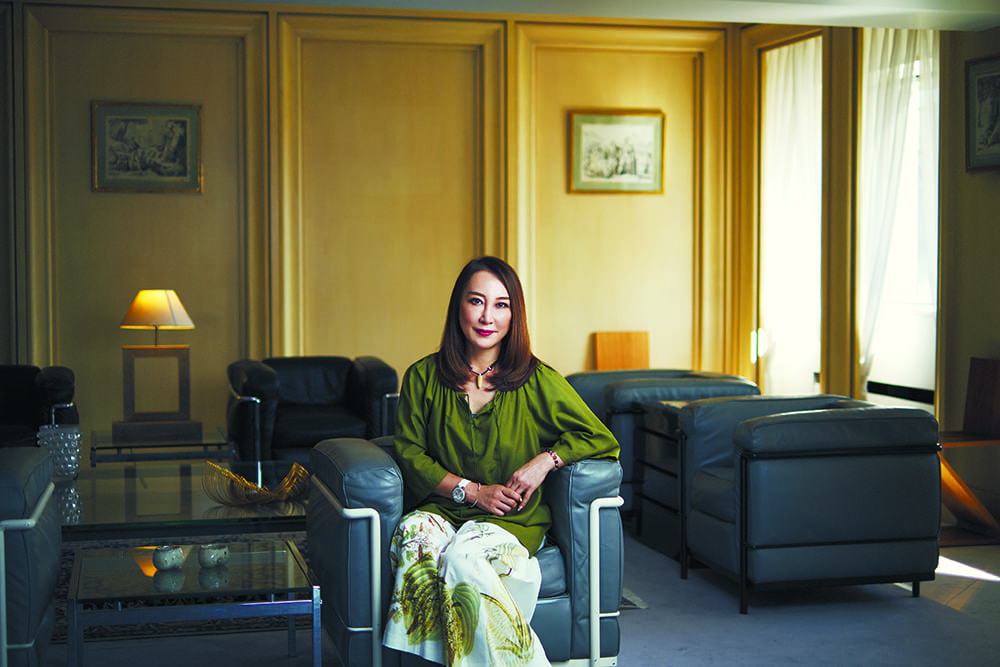September 27, 2024
The expo pavilion with a Nishijin brocade exterior
EXPO 2025
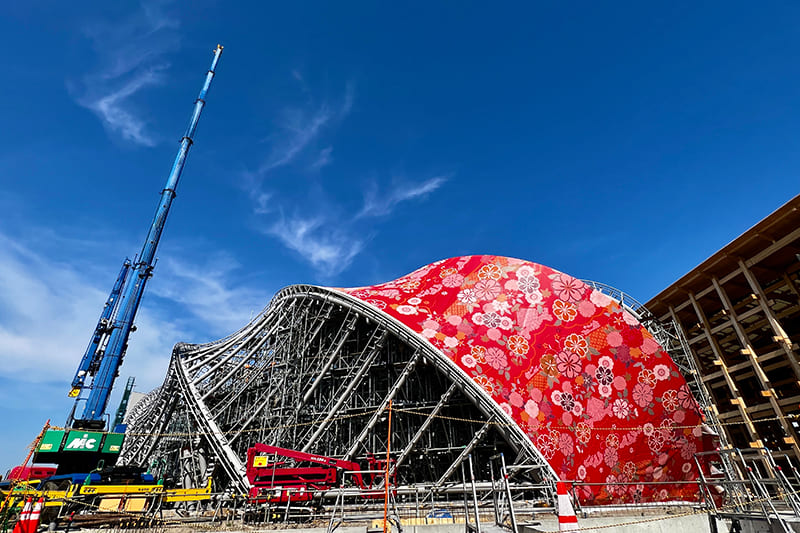
It is now just six months until World Expo 2025 opens in Osaka. While construction of the overseas pavilions is behind schedule, the domestic pavilions are making steady progress toward opening day in April.
In addition to the national and local government pavilions, such as the Japan Pavilion and the Kansai Pavilion, 13 pavilions by companies and organizations will be part of the expo.
At the 1970 Osaka Expo, it was the numerous private-sector pavilions that were the stars. Their futuristic and avant-garde architecture — like the Toshiba IHI Pavilion and Takara Beautilion Pavilion by then-promising young architect Kisho Kurokawa, and the Textiles Pavilion by artist Tadanori Yokoo — must have left a strong impression on the minds of many visitors, especially children.
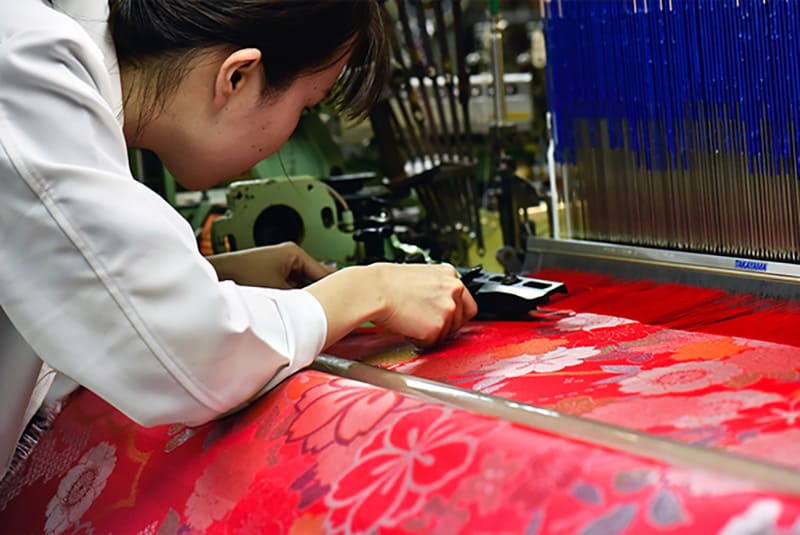
© IIDA GROUP HOLDINGS
Of all the pavilions planned for the upcoming expo, one of the most eye-catching is sure to be the private-sector pavilion jointly produced by the housing manufacturer Iida Group Holdings and Osaka Metropolitan University. All of its exterior walls will be made of Nishijin brocade, a traditional fabric from Kyoto.
The pavilion was designed by architect Shin Takamatsu. To express his idea that “human life and technology are all part of one single cycle,” Takamatsu created the concept of a “sustainable Mobius strip.” A Mobius strip, which one can create by twisting a rectangular strip once and pasting the edges together, has no front or back and so is often used to symbolize eternity or circulation. Takamatsu incorporated this motif into his design. “The building is a complex and completely unique three-dimensional structure based on a Mobius strip. The entire structure is almost elliptical in shape, within which all of the exhibitions will be placed. It is, so to speak, a one-room three-dimensional exhibition,” he said.
The exterior walls of the pavilion will be made of Nishijin brocade, a fabric dating back 1,200 years, to express a time axis linking the past and the future. Of course, using textiles for the exterior of a building, exposed to rain and wind, is unusual. Furthermore, the use of the high-end Nishijin brocade for all 3,500 square meters of the pavilion’s external surface is an expensive endeavor. And not only that, since textiles are basically flat, it is not easy to attach them to a building frame that has a complex three-dimensional structure. As the pieces of fabric are combined, great care must be taken to align the patterns. Shrinkage of the delicate fabric must also be avoided.
The production of this Nishijin brocade was handled by Hosoo, a venerable manufacturer founded in 1688. The standard width of conventional textiles is 32 centimeters, to match the dimensions of a kimono, but Hosoo has developed a weaving machine with a width of 150 centimeters, a standard used internationally in interior design. Using this loom as well as 3D mapping technology, Hosoo was able to create a three-dimensional fabric for the building’s exterior. In addition, to ensure durability, Hosoo applied a unique twist to polyester threads and, together with Taiyo Kogyo, a pioneer in membrane structures, developed a Nishijin textile with a surface coating capable of withstanding both wind and rain. Because there was a risk that the coating would be so glossy that it could look like the brocade had merely been printed, they had to be careful to give it a realistic muted tone.
Thus, with an exterior featuring traditional Nishijin brocade made using the latest technologies, and an interior featuring exhibitions of advanced technologies like artificial photosynthesis to support future cities and home wellness technologies, the past, present and future are fused together, and the “life” that has continued from past to present is expressed as growing refined and polished through repeated cycles of reincarnation and progress. According to Iida Group Holdings, after the expo is over, the company is considering reusing the textiles for home and office interiors. Work began in April to stretch the brocade over the exterior of the pavilion. How fascinating it will be to watch the progress of this completely new application of a traditional Japanese technique.
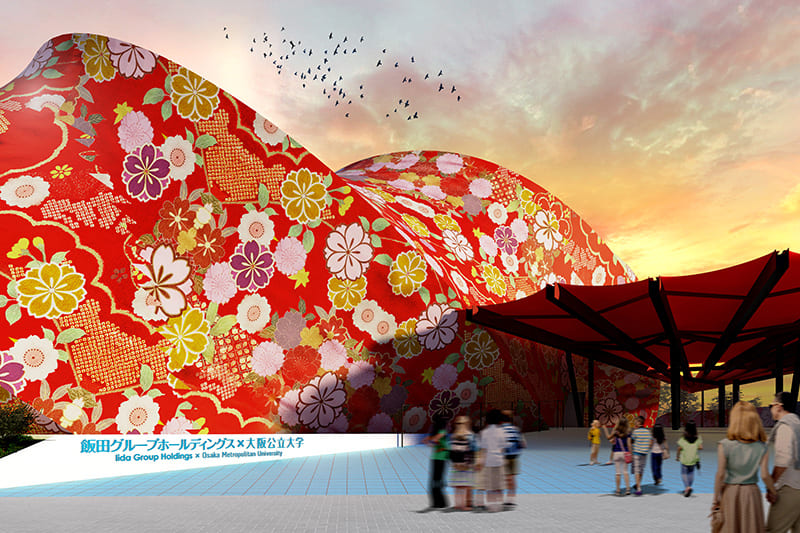
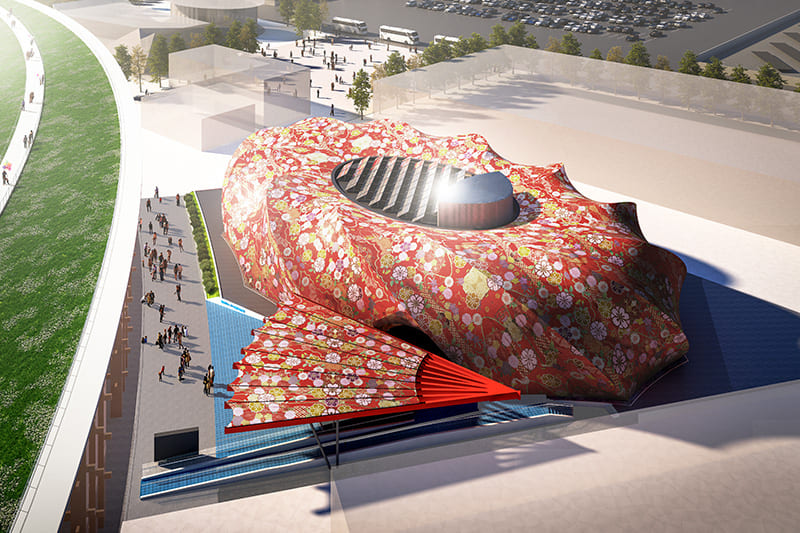
IIDA GROUP & OSAKA METROPOLITAN UNIVERSITY JOINT EXHIBITION HALL
(Architect: Shin Takamatsu)
The concept of the exterior is a “sustainable Mobius strip.” Specially processed Nishijin brocade is used for the exterior to express the eternal wish for happiness and prosperity in life. Inside the building, exhibits are planned on “future housing” and “urban development” that will enable healthy and comfortable living through new technologies and new energy sources to realize a decarbonized society.
Site area: 3,500 square meters / Floors: one basement, two floors / Maximum height: 12.7 meters / Structure: framework-membrane structure with steel frame in parts / Construction: Shimizu Corp. / Nishijin textile production: Taiyo Kogyo Corp. and Hosoo Co. Ltd.
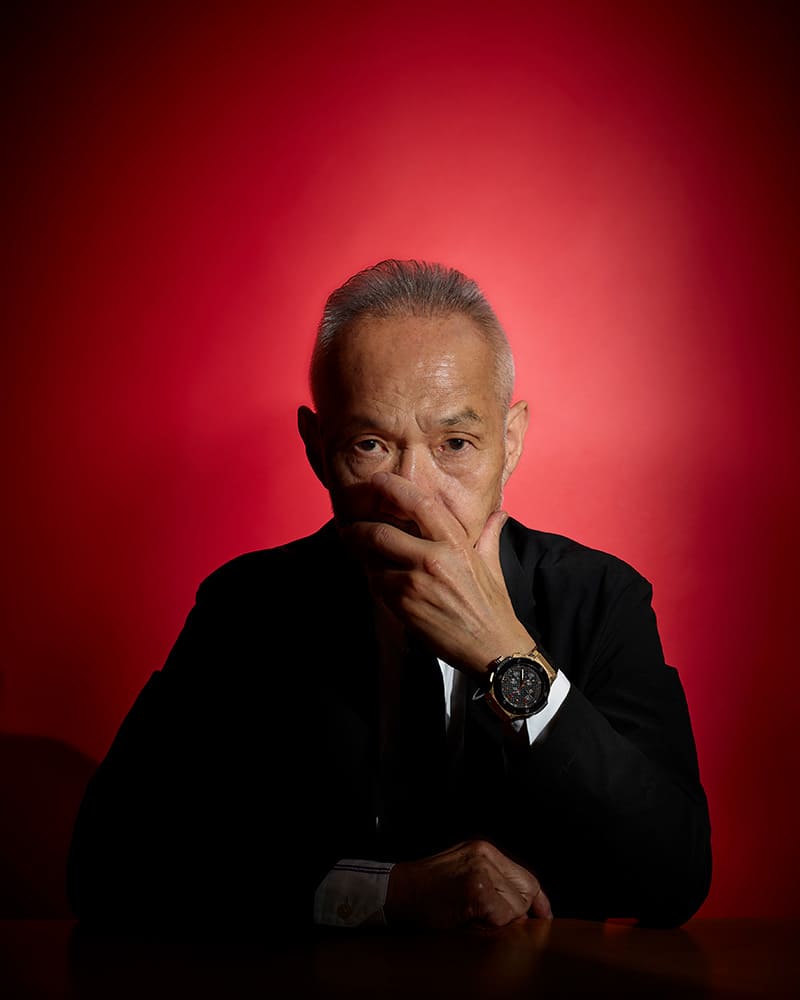
SHIN TAKAMATSU
Professor emeritus, Kyoto University. Doctor of engineering. Honorary member of the American Institute of Architects.
Honorary member of the German Institute of Architects. Member of the Royal Institute of British Architects.
In 1997, he became a professor at the Graduate School of Engineering, Kyoto University, where he continues to teach.
Major works include the Shoji Ueda Museum of Photography, National Theatre Okinawa and the Tianjin Museum in China.
https://takamatsu.co.jp/
伝統的な「西陣織」を外装にした万博パビリオン。
2025年4月開催の大阪・関西万博で特に注目したいパビリオンが、住宅メーカー〈飯田グループホールディングス〉と〈大阪公立大学〉が共同出展する民間パビリオン。その理由は外壁のすべてに京都の伝統的な織物、西陣織を使用していることだ。設計者は建築家・高松伸。「人間のいのちもテクノロジーも、すべては循環している」ことを表現するために高松が生み出したのは“サステナブル・メビウス”というコンセプトだ。ご存じメビウスの輪は表裏の区別がなくなる特徴から、永遠性や循環のモチーフとして用いられることが多い。高松はこれを設計に取り入れた。外壁には、過去と未来とをつなぐ時間軸を表現するため、1200年の歴史と技術をもつ西陣織が採用されることになった。
だが雨風にさらされ耐久性が求められる建物外装に織物を使用するという試みは前代未聞のことだ。また複雑な立体構造をもつ建築躯体に平面の織物を貼り合わせるのは至難の業。美しい柄が特徴の西陣織を貼り合わせる際、柄がずれてしまわないように細心の注意が必要だ。
Return to Sustainable Japan Magazine Vol. 40 article list page

